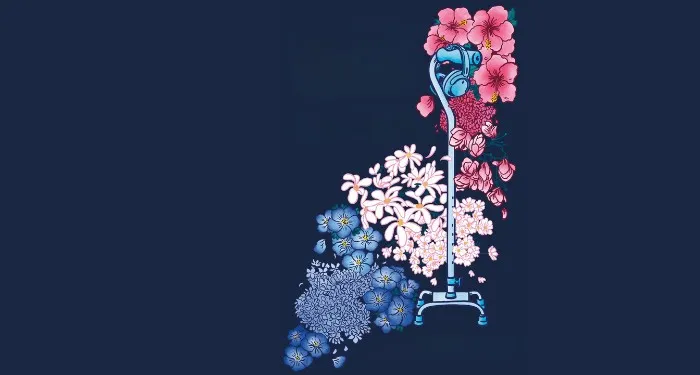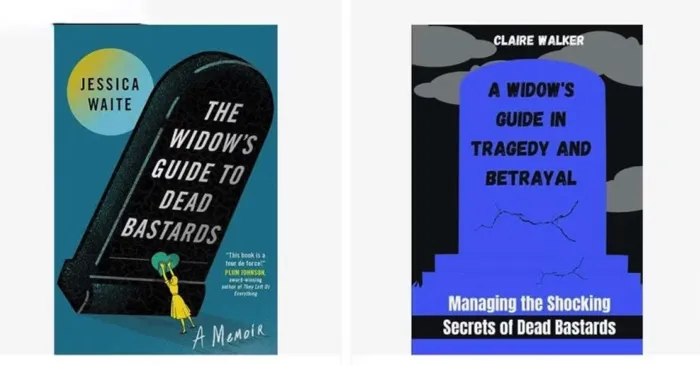So long have serial killers been a staple of American popular entertainment—films (Zodiac, Se7en, Badlands, Natural Born Killers, The Silence of the Lambs, Monster, Longlegs), TV series (Dexter, Criminal Minds, True Detective, The Fall, Mindhunter), true crime documentaries and podcasts (This Is the Zodiac Speaking, The Jinx: The Life and Deaths of Robert Durst, Gone Girls: The Long Island Serial Killer, Conversations with a Killer: The Ted Bundy Tapes, Jack the Ripper: Unmasking the Ripper, The Serial Killer Podcast)—that it’s a welcome reminder in Caroline Fraser’s unrelentingly bleak and impassioned Murderland that not all of them are individuals: “Corporations can be people, and people can be killers, ergo, corporations can be killers.”
Murderland is Fraser’s first book since her Pulitzer Prize–winning biography Prairie Fires: The American Dreams of Laura Ingalls Wilder (2017). The product of vast research into the correlation between violent behavior and neurological damage associated with high levels of environmental pollutants (lead, asbestos, arsenic) in the blood, it is an amalgam of true crime reportage, visionary muckraking in the tradition of Rachel Carson’s Silent Spring (1962), and a startlingly candid memoir of Fraser’s girlhood in the Seattle area in “the time of serial killers”—both individual and corporate. Its theme is simple and terrible enough to be repeated time and again through four-hundred-plus pages: “More lead, more murder.”
Fraser isn’t shy about identifying the progenitors of “America’s killing fields”—those areas of the United States most polluted by mining, refining, and heavy industry that have also, surely not coincidentally, spawned a nightmare cast of sexual sadist–psychopaths, including the notorious Ted Bundy (Tacoma, Washington), Dennis Rader/BTK (southeastern Kansas—part of the “lead belt”), Richard Ramirez (El Paso, Texas), the unidentified Zodiac Killer (somewhere in California), and many others best relegated to a footnote.1 But these killers are small fry, mere amateurs set beside the multimillionaire purveyors of environmental toxins: “It takes two great American family fortunes to build a city of serial killers: the Rockefellers and the Guggenheims.”
The focus of Murderland is the poisonous legacy of the Guggenheims, owners of the American Smelting and Refining Company (ASARCO). Acquired in 1901 by Daniel Guggenheim and his brother, the Tacoma-based ASARCO eventually expanded into “a behemoth operating as a near monopoly, one of the most economically and politically powerful entities in the world, governing 90 percent of American lead production.” It has also been one of the world’s largest producers of arsenic, “one of the most hazardous substances known to man.” As early as 1913 it was understood that smelter smoke (which contains sulphur, arsenic, lead, and zinc, among other emissions) is poisonous to living things; the industry defended itself by building higher smokestacks. (Engineers promised that the taller the smokestack, the less it would pollute the environment: “‘Sulphurous fumes’ will blow away in the wind.”) For a time ASARCO’s Tacoma smokestack was “the tallest stack in the world and the highest industrial structure on the West Coast.” By the time of the Depression, Fraser notes, Tacoma was so steeped in pollution, corruption, and violence that the ex-Pinkerton detective Dashiell Hammett used it as the setting for his first novel, Red Harvest (1929), calling the city “Poisonville.”
Even as the Guggenheim family expanded its highly profitable business through the Pacific Northwest and points south, including South America (Peru, Chile, Bolivia), and “bought its way into culture” through the establishment of the John Simon Guggenheim Memorial Foundation in 1925, unchecked ASARCO smelters spewed lead into the air:
What is lead? It is a poison, second in toxicity only to arsenic…. It burns with a white flame. It’s resistant to corrosion…. It enters the world in many ways, including but not limited to “oil-processing activities, agrochemicals, paint, smelting, mining, refining, informal recycling of lead, cosmetics, peeling window and door frames, jewelry, toys, ceramics, pottery, plumbing materials and alloys, water from old pipes, vinyl mini-blinds, stained glass, lead-glazed dishes, firearms with lead bullets, batteries, radiators for cars and trucks.”… Lead is a vampire. Invite it in and it will drink your blood and live forever.
In Philadelphia in the late 1940s, where Ted Bundy lived as a small child before being brought by his unmarried mother to Tacoma, there were no fewer than thirty-six lead smelters:
Along the rivers, in crowded residential neighborhoods, furnaces burn raw ore until it flows, and their smokestacks pour the leftovers of that combustion into the air for all to breathe: tons of ultrafine particles that float and fall out and settle on the roofs and sidewalks, in the backyards and on the brick stoops and windowsills of the city. These clouds are poison, and their benign white visage cloaks the ghostly forms and features of uglier phantoms. Cadmium, mercury, and arsenic. Benzene, naphthalene, anthracene. Cyanide. Burned in the hellfire of private enterprise, set free on an unsuspecting world, they will have their revenge.
Not surprisingly, so-called experts in the pay of the poison industry have always denied that toxic air, water, and earth can harm people. A Washington State Health Department epidemiologist insisted as late as 1972 that there is “absolutely no evidence that the amount of arsenic people are being exposed to around the smelter has caused any acute health effects at all.” The US Public Health Service assured citizens that though workers and their children bore high levels of lead and arsenic, there were no “adverse effects.” (At that time the federal limit for lead levels in blood was set so high that even heavily exposed children did not appear, on paper, to be poisoned.) Toxicologists argued that lead in the environment and in human bodies was “natural,” until in the 1950s it began to be acknowledged, thanks to researchers at Caltech, that Americans were likely suffering from “enough partial brain dysfunction, that their lives are being adversely affected by loss of mental acuity and irrationality.”
Murderland makes no claim to originality in its basic premise that companies like ASARCO have poisoned countless citizens and may be responsible for the sort of prefrontal brain damage that characterizes serial killers. It is Fraser’s strategy to bring these revelations together and to hammer home what has been known but too easily forgotten. She cites the early, bluntly titled article “Does Lead Create Criminals?” (1974), which argued that lead emissions may be a factor in the rise of juvenile delinquency, adult crime rates, and aggressive behavior generally; children exposed to lead in utero or during their first years of life might display a dizzying array of symptoms: “Some are mentally dull, suffering from difficulties in reading and writing…. Others are bright but hyperactive, with short attention spans. Some are impulsive, some violent.” Fraser writes that in 2005, in the journal Biological Psychiatry, it was noted that
structural deficits in the prefrontal cortex…can be seen in so-called unsuccessful psychopaths….
[Researchers] find that lead exposure in childhood is linked to brain volume loss when their subjects reach adulthood, and that the effects are particularly notable in men.
(“Unsuccessful psychopath” is the term for a psychopath who gets caught.)
How unexpected is it, in what has been a damning inventory of rapacious industrial pollution and sadistic serial killers, that in the concluding chapter of Murderland the revered names Roger Straus Jr. and Farrar, Straus and Company abruptly emerge, linked to the Guggenheim family fortune and foundations “devoted to subsidizing culture” or, less romantically, “whitewashing the family name”? Fraser is scathingly ironic in addressing this “whitewashing” in the figure of Straus, a “storied publisher, one of several Guggenheims who’ve managed to slide off the slag pile and cover his coattails in cultural glory.” The cofounder of Farrar, Straus and Company in 1945, Straus was the publisher of Metal Magic: The Story of the American Smelting and Refining Company (1949), “a tribute to the ‘romance of mining,’ dedicated to the memory of Daniel Guggenheim.” In a 2002 New Yorker profile titled “Showboat: Roger Straus and His Flair for Selling Literature,” much is made of Straus’s sartorial extravagance and the Nobel and Pulitzer Prize–winning authors his firm has published, but the origins of the family fortune are never acknowledged, Fraser writes:
Daniel Guggenheim’s name floats by, but the American Smelting and Refining Company is never named. Not a word about its suppurating Superfund sites, its asbestos lawsuits, its free hand with arsenic, or the lung cancer it has bestowed on communities all across the American West. Nobody wants to remember where the money comes from.
Whatever the Sackler family is trying to do by collecting art and endowing museums, lifting their skirts away from the hundreds of thousands addicted and killed by prescription opioids manufactured and sold by their company—Purdue Pharma—the Guggenheims have already stealthily and handily accomplished.
Though Murderland might be cataloged as ecojournalism, it is also a multi-true-crime narrative related in a breathlessly propulsive manner. Folded into the charges against corporate polluters like ASARCO are passages that fairly spring off the page:
As [World War II] rages to its conclusion, monsters are coming to life, animated. The greatest generation of serial killers comes out of the war: Richard Speck and Fred West are born in 1941; Ted Kaczynski, John Wayne Gacy, James Homer Elledge, and the rare female lust murderer Carol Bundy (no relation to Ted) in 1942; Gary Heidnik and Rodney Alcala in 1943; Dennis Rader, Joseph DeAngelo, Randy Kraft, Leonard Lake, and Arthur Shawcross in 1945; William Earl Cosden Jr., Ted Bundy…in 1946; Herbert Mullin in 1947; Ed Kemper in 1948; Gary Ridgway, Robert Pickton, and Warren Leslie Forrest in 1949.
(Fraser might have added Randy Woodfield, born in 1950, another in the litany of serial killers in Murderland who as a child lived in the spume of airborne toxic waste.)
Commemorating the many victims of serial killers, many of them unnamed, unknown, Fraser’s prose is lyrical, elegiac:
There are so many. Skulls, skeletons. The disarticulated. Delicate bones cast in the leaf litter. Vine maple threading through the eye sockets. Silence in the duff. The recently dead waiting patiently in rivers, rigor long passed, facial effacement, hair weaving with the current. Bows, flows.
The places where these turn up make a map all their own.
But it is, for the true crime aficionada, the perpetrators of atrocities who excite the attention, for these are the active agents of horror. Ted Bundy, for instance, the very emblem of the long-successful serial killer, is, in Fraser’s striking language, “that productive son of Tacoma [who] leaves women dead in his wake the way ASARCO blows smoke.” It is Bundy, and others similarly poisoned by the air they breathed as children, whom she is determined to record in what she calls her Great Domesday,
a ledger tracking those permeated with heavy metals, volatile chemicals, tar, creosote, chromium, arsenic, carcinogens, mutagens, and whatever’s leaching out of pressure-treated lumber. Dr. Jekyll has been at work here for a long time, nearly a hundred years, and his experiments are about to yield results. Spectacular results.
Yet Fraser interrupts her narrative frequently to speak of herself, growing up on Mercer Island, near Seattle, breathing smelter air only slightly less toxic than the air breathed by Bundy in his boyhood. “I have a grid of the island I lived on with a pin in one serial killer’s house, 1,232 yards from where I grew up,” she writes. Within the dense pages of Murderland such memoirist passages are appended, sometimes rather awkwardly, to the book’s less personal concerns. They glitter like small precious gems within a slag heap of ugliness, giving us fleeting glimpses of a precocious child, a girl, a young woman coming of age in the 1960s. The precocious child likes “reading about bad things happening to other people.” She is morbidly fascinated by movie monsters, TV vampires, serial killers. Years later, on leave from graduate school at Harvard, she finds herself living in Los Angeles “in the providential span between the Hillside Strangler and the Night Stalker” with a boyfriend she describes as “almost catatonically silent” who has once tried to strangle her and may well try again.
As the chronicler of Murderland Fraser doesn’t identify herself as wholly alien to Bundy et al. in the way that writers usually detach themselves from subjects as horrific as hers. And she doesn’t detach herself from the instinct to kill, not serially but in her girlhood wish to murder her father and, perhaps most surprisingly, her disappointment as an adult that she never did. So tyrannical and perpetually angry is this father who seems always bent upon punishing his daughter and everyone else in his vicinity that the reader can sympathize with the child Caroline, fuming with hatred of him and plotting his death, initially with a letter opener, stabbing him right between the eyes, and more practicably when he insists on taking his family out, in “freezing gray rain,” in the Strait of Juan de Fuca in the thirty-foot sailboat he has forced them to help him build by hand:
My plan is to push him. Choose the right spot and no one will see. It will require split-second timing, careful consideration of distance from shore and of speed, momentum, and other boats: We will have to be moving fast enough to get far enough away from him before my mother can figure out what’s happening…. A crack on the head wouldn’t hurt either. He can swim. We all know he can shout. It must look like an accident.
One shove. And overboard. He’s my problem, and that’s how I should solve it.
Later in life, one phrase will come to mind, after my father has died without much help from me. I’ll think: I should have killed him while I had the chance. For years, years in which he does a lot of damage. I have means, motive, and opportunity. Yet I lack an essential quality: a single-minded commitment. Unaccountably, I fail to act. I am still sorry.
But not everyone holds back. Not everyone fails.
Not everyone fails. Fraser’s cast of serial killers do not fail.
Of these, it is Ted Bundy who best embodies the single-minded commitment to kill, kill, and kill again. Not for Bundy (once called a “terrific looking man,” an “all-American boy,” and “Kennedyesque” in The New York Times Magazine) the timidity of holding back. It might be said that devotees of true crime are as familiar with his sordid life story as devotees of boxing are with the triumphant life story of Muhammad Ali—must it be recounted yet again? And at such length, with such unsparing details? Fraser seems to think so, reimagining Bundy’s rape-murder sprees in a sort of hyperventilating prose, providing a painstakingly precise record disproportionate to the larger project of Murderland, and often quick-cutting to the rape-murder sprees of Bundy’s contemporaries Dennis Rader, Richard Ramirez, the Zodiac Killer, and the Green River Killer at exhaustive length. If the thesis of Murderland is that there’s a lethal connection between environmental contamination and violent crime, it is probably not necessary to evoke sexual-sadistic murders one by one or to appear to be vicariously reliving Bundy’s most thrilling moments, especially since thousands of pages have been published about him, starting with Ann Rule’s now-classic The Stranger Beside Me (1980).
Bearing the ignominy, in the 1940s, of being “illegitimate,” Bundy seemed always to be in a polluted environment. In 1953, for instance, when he was seven, he was living close to the Ruston smelter near Tacoma, where in a single year 630 tons of arsenic and two hundred tons of lead were released into the air—“more airborne arsenic than anywhere else in the country.” Soon he began to exhibit antisocial, violent behavior, particularly directed toward girls. It is likely that he committed his first murder at the age of fourteen, of an eight-year-old girl who disappeared from the neighborhood; her body was never recovered.
Through the 1960s and 1970s Bundy was continually in motion: “He is buying gas, leaded gas, virtually every day of every month.” He moved about restlessly in Washington, Oregon, California, Utah, Idaho, Colorado, and Florida (after escaping from jail in Colorado), sexually assaulting and brutally murdering young women, often raping their bodies after their deaths. He was romantically involved with young women in apparently normal relationships and even engaged for a while to a young divorced mother named Elizabeth Kloepfer, who as early as December 1975 contacted Salt Lake City police to alert them that her fiancé might be a killer they were looking for and was assured that they’d already checked him out—“nothing to worry about.” In one of his numerous jobs he was an affable, well-liked staffer for the Republican Party of Washington state. (Is it surprising that Bundy was a staunch believer in law and order and a counterprotester after the Kent State shootings who railed against “radical socialist types”?)
Fraser’s accounts of Bundy’s many stalkings and killings suggest that his behavior was near-robotic, compulsive; most of his (more than thirty) young women victims resembled one another closely enough to be relatives, with long dark hair. His assaults were usually opportunistic, a matter of chance. In May 1973 “he picks up a hitchhiker near Olympia and murders her and doesn’t catch her name.” In February 1974, “on an isolated mountain hillside, where there is no one within screaming distance, [Bundy] removes her from the car, rapes her again, and strangles her. He spends the night with her body.” (Fraser’s euphemism for necrophilia.) In October 1974 “he spends the night raping her. He murders her the next day, dumping her body somewhere in the vast Utah wilderness…. Her remains are never found.”
Eventually, like many compulsive killers, Bundy becomes more reckless. Fraser calls it “riding a doomsday high”:
After years of sporadic attacks on stewardesses and hitchhiking teenagers and random strangers, he is graduating to ever riskier pursuits, assaulting women in his own neighborhood, on his own street. His sorties are growing ever more complex as he enters the giddy-making higher atmosphere of the true aesthete, the collector, the marathon killer…. He is becoming addicted to these activities, and, like any user, he is finding that it takes more and more product to meet his needs.
Fraser evokes Bundy’s acts as if in a dreamlike present in which the scrim between author and subject vanishes as in a David Lynch film of surreal yet becalmed nightmare. In one passage Bundy is driving his doomed victim across Mercer Island just “a few hundred yards from where I am asleep in bed in my room next to the carport and our own VWs”:
He pulls her out of the car. She’s “quite lucid,” Ted will recall, as he strips off her clothes…. Either before or after he takes off her clothes and rapes her, he hits her again with the crowbar and breaks her jaw and strangles her with a piece of rope, raping her body all night until the sun comes up, although the only witness attesting to this sequence of events is wholly unreliable.
Rarely has a true crime chronicler entered so ardently into the imagined consciousness of her subject, who in his “sunny daylight guise” can pass himself off as purely normal, indeed the preppy, handsome Republican Party staffer. But, more thrillingly,
when the chemical finery comes into play, he morphs into another being, wordless and barely human: he’s the invisible worm that flies in the night in the howling storm. He’s a modern monstrosity who, “for all his energy of life,” is something “not only hellish but inorganic.” A sexual virus masquerading as a person, usurping “the offices of life”…as [he] rejoices in beating and choking females to death, ejaculating in every orifice of their unconscious bodies.
In speaking boastfully of himself in various interviews, Bundy was never so eloquent as Fraser in describing his actions.
Sharing 1970s serial killer celebrity with Bundy in the more sensational pages of Murderland is the far cruder Dennis Rader, aka BTK (“Bind, Torture, Kill”—Rader’s nickname for himself), a Christian, churchgoing family man of Wichita, Kansas, who in a letter sent decades before he was caught attributed his penchant for sexually sadistic murders to “factor X”:
You don’t understand these things because your not under the influence of factor X. The same thing that made Son of Sam, Jack the Ripper, Havery Glatman [sic], Boston Strangler, Dr. H.H. Holmes Panty Hose Strangler of Florida, Hillside Strangler, Ted of the West Coast and many more infamous character kill. Which seems senseless, but we cannot help it. There is no help, no cure, except death or being caught and put away. It a terrible nightmare but, you see I don’t lose any sleep over it.
Very likely, BTK speaks for all his serial-killer cohort, including Ted Bundy. Nothing lyrical or romantic about it—just factor X. (An X-ray of Bundy’s skull at the time of his first trial, in 1976, was reported to show “some nonunion of coronal suture” in his brain; the coronal suture normally fuses by around age twenty-four, but this was not the case with him. Very possibly, Fraser hypothesizes, the result of “a little too much lead.”)
True crime documentaries and podcasts are said to be particularly popular with women. Though women are the victims of most of these “true crimes,” they are usually solved and the perpetrators punished, which is often not the case in life, particularly where sexual crimes are concerned. Readers unfamiliar with the life and career of Ted Bundy, even readers sympathetic to revoking the death penalty, will be relieved to hear that after years of police blundering and incompetence and the sort of sexist laissez faire that allows prosecutors not to pursue charges of sexual assault if they can avoid it, especially against all-American types like Bundy, he was finally captured for the last time in 1978 in Florida, where, in two trials, he was found guilty of murder and received three death sentences; after appeals, he was executed in the electric chair at Florida State Prison in 1989. (“The person who throws the switch, never identified, is said to have been a woman.”)
Though Bundy eventually confessed to thirty murders, which included cutting the heads off some of his victims and keeping them, Fraser notes that he could not bring himself to describe to investigators the full extent of his violence, necrophilia, and mutilation of the women’s bodies.2 Still, Bundy’s vanity led him to represent himself at his trial; ever the sexual sadist, he insisted on cross-examining witnesses, including police officers who had discovered the bodies of his victims, and drawing out their testimonies. Fraser notes that according to newspaper accounts he appeared to be “savoring the clinical description of his handiwork,…reliving a moment of profound sexual gratification.”
Despite Fraser’s penchant for gruesome details, Murderland does not end on a wholly pessimistic note. The reader is relieved to hear that, like Bundy, ASARCO was dealt some punishment for its crimes. In 2009 federal and state agencies extracted a landmark settlement of $1.79 billion to go to nineteen states, not much by contemporary standards but at least some retribution to help clean up the despoiled environment: “However inadequate for these Augean stables, it’s a bonanza.”
Following the suicide of the grisly serial killer Israel Keyes in Alaska in 2012, Fraser asserts, with surprising certainty, that the “era of murder” has passed—“one hour of lead.” Tacoma is still not a pretty city, she acknowledges, but after millions of dollars of industry cleanup, “there’s little of the age-old aroma.” Stricter environmental protections in the 1990s are credited with having prevented the sort of brain damage that may have resulted in the serial killers of past decades. It is true that in the 1990s there were 669 serial killers known to police in the United States, in the 2000s 371, and from 2010 to 2020 just 117, but serial killers are only one category of killers in the United States and have statistically been relatively small in number considering the population. The Supreme Court’s recent restrictions on the Environmental Protection Agency’s authority to regulate pollutants and the Trump administration’s efforts to rescind existing regulations, however, do not bode well for the continuing decline in those numbers.
The sympathetic reader is inclined to inquire: Why are sexual serial killers the sole concern of Murderland, rather than mass murderers, school shooters, and domestic terrorists, so much more representative of the current violence of the United States? It is likely that gun violence also springs from mental illness or brain dysfunction, whether caused by lead-spewing smelters or hate-spewing right-wing media, not to mention (as Fraser does not) the prevalence in the US of every sort of firearm and ever more lax gun control laws.
Fraser ends Murderland with a passionate plea:
Those were the days, my friends, and they may or may not ever end. But take heart: I have a plan. I have an incantation.
I curse you, you corporate scribes and pharisees, you hypocrites, rubbing your hands over whited sepulchres full of dead women’s bones. You think you’re getting away with it. Just you wait.
I rewrite your Bible, restoring the Gospel of Judith, her with a sword.
I declare this: Do not be about your father’s business. Your father’s business is rape and murder….
Now and forever, let it all be over.



















 English (US) ·
English (US) ·